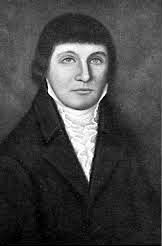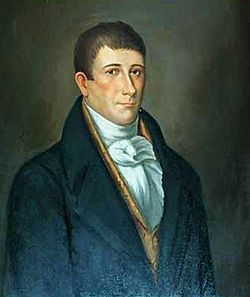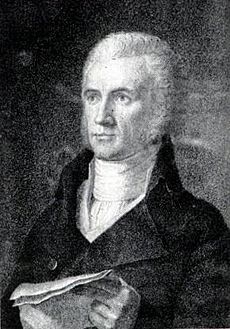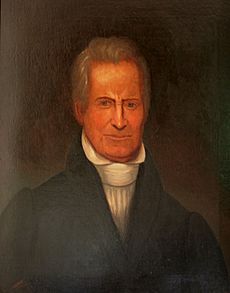North Carolina state troops in the American Revolution facts for kids
Quick facts for kids North Carolina State Troops in the American Revolution |
|
|---|---|
| Active | 1775–1783 |
| Allegiance | North Carolina |
| Branch | State Troops |
| Commanders | |
| Notable commanders |
Major General John Ashe, Sr. |
During the American Revolution, North Carolina needed its own soldiers to fight for independence from Great Britain. These first groups of soldiers were called the North Carolina State Troops. Many of these units didn't stay as 'State Troops' for long. Instead, they often joined the main American army (the Continental Army) or became part of the local state defense groups called the Militia.
Contents
- Leading the Fight for Freedom
- The First Regiments
- Minutemen: Ready in a Minute!
- Light Dragoons: Cavalry Soldiers
- Independent Coastal Companies
- Artillery Companies
- French Refugees Regiment
- North Carolina State Regiment
- North Carolina State Cavalry, Western District Regiment
- North Carolina Light Horse Regiment
- North Carolina State Legion Regiment
- Forts and Garrisons
Leading the Fight for Freedom
The North Carolina State Troops and the local militia were led by important generals. From 1778 to 1779, Major General John Ashe was in charge. Later, Brigadier Alexander Mebane helped make sure the troops had enough supplies as the Commissary General from 1780 to 1783.
Here are some of the different types of military units that North Carolina had during the war:
The First Regiments
- The 1st North Carolina Regiment was formed on September 1, 1775. Its soldiers came from the Wilmington and Salisbury areas. Colonel James Moore was their first leader. This regiment officially joined the main American army (the Continental Line) on July 8, 1777.
- The 2nd North Carolina Regiment was also created on September 1, 1775. Colonel Robert Howe was its first commander. This regiment joined the Continental Line on January 8, 1777.
Minutemen: Ready in a Minute!
In 1775, the Third North Carolina Provincial Congress decided to create six special groups of soldiers called "Minutemen." These soldiers were supposed to be ready to fight at a moment's notice. Each Minuteman group was planned to have ten companies, with 50 men in each company.
Counties were asked to provide soldiers from their local militias to fill these Minuteman groups. The Minutemen would train for two weeks and then meet regularly. They were like a "standing army" paid full-time by North Carolina. However, the idea of Minutemen didn't last long. After the Battle of Moore's Creek Bridge in February 1776, the local militias proved they could fight well. So, the Minuteman idea was dropped, and the state focused on using militia groups instead.
Here are the Minuteman Battalions that were formed:
- The Edenton District Minuteman Battalion was created in September 1775. It was led by Colonel Edward Vail. This group was involved in a small fight at Great Bridge, Virginia in December 1775. It was disbanded in April 1776.
- The Halifax District Minuteman Battalion was also formed in September 1775. It was commanded by Colonel Nicholas Long. This battalion was disbanded in April 1776.
- The Hillsborough District Minuteman Battalion was created in September 1775. Colonel James Thackston led this group. It was disbanded in April 1776.
- The New Bern District Minuteman Battalion was formed in September 1775. It was led by Colonel Richard Caswell. This battalion was disbanded in April 1776.
- The Salisbury District Minuteman Battalion was created in September 1775. It was commanded by Colonel Griffith Rutherford and Colonel Thomas Wade. This battalion was disbanded in April 1776.
- The 2nd Salisbury District Minuteman Battalion was formed in December 1775 by splitting the first Salisbury group. Colonel Thomas Polk was its leader. It was disbanded in April 1776.
- The Wilmington District Minuteman Battalion was created in September 1775. It was led by Colonel John Alexander Lillington. This group was disbanded in April 1776.
Light Dragoons: Cavalry Soldiers
The North Carolina Light Dragoons Regiment was a group of cavalry soldiers (soldiers who fight on horseback). It started with three companies in April 1776. It later became part of the Continental Line but then became a North Carolina State Troops regiment again in 1779, led by Colonel François Malmédy. This regiment was disbanded in late 1781.
Independent Coastal Companies
Five independent companies were created in April 1776 to protect North Carolina's coast.
- The Bogue Inlet Independent Company (disbanded December 1777)
- The Cape Fear Independent Company (disbanded November 1776)
- The Core Sound Independent Company (disbanded December 1777)
- The Ocracoke Independent Company (disbanded December 1777, but restarted in July 1779 and stayed active until the end of the war)
- The Outer Banks Independent Company (disbanded December 1777)
Artillery Companies
North Carolina also had companies that operated cannons and other artillery:
- The 1st North Carolina Artillery Company was formed in May 1776 and led by Captain John Vance.
- The 2nd North Carolina Artillery Company was formed in January 1777 and led by Captain Thomas Clark. It was disbanded in June 1779.
These companies joined the North Carolina Line in July 1777.
French Refugees Regiment
In April 1778, North Carolina tried to create a regiment of French soldiers who had come to America. This "French Refugees Regiment" was to be led by Colonel Monsieur Chariol DePlacer. However, not enough Frenchmen joined, so the regiment was disbanded in August 1778.
North Carolina State Regiment
In January 1779, North Carolina created a State Regiment (sometimes called a State Legion) to deal with Loyalists (people who supported the British) within the state. Soldiers from different militia groups joined for three-month periods. This regiment, led by Colonel John Herritage, was not allowed to leave North Carolina. It included both foot soldiers (infantry) and cavalry.
The unit was disbanded in October 1779. It was later restarted in July 1781 under Colonel Benjamin Williams and then Colonel Joel Lewis. It was finally disbanded on January 10, 1783.
North Carolina State Cavalry, Western District Regiment
In September 1780, Colonel William Richardson Davie was put in charge of a new cavalry regiment in the western part of North Carolina. This group was called the North Carolina Cavalry, West District Regiment. It didn't last long, only a few months, because Colonel Davie was given a new job to get supplies for the state.
However, this regiment did take part in some important battles:
- On September 21, 1780, they attacked the British at Wahab's Plantation in South Carolina.
- On September 26, 1780, they fought against the entire British Army as they marched into the Battle of Charlotte.
- On October 9, 1780, they had a skirmish at Polk's Mill in North Carolina.
North Carolina Light Horse Regiment
It's not fully clear if there was one official "Light Horse Regiment" for all of North Carolina's state troops or militia. However, in February 1781, the state decided to create a new cavalry regiment from the Halifax District. Captain James Reid was put in charge and quickly promoted to colonel. Other units from around the state joined this regiment.
Companies from this regiment fought in several battles and skirmishes:
- March 15, 1781, at New Garden Meeting House.
- March 15, 1781, at the Battle of Guilford Court House in North Carolina.
- April 25, 1781, at Hobkirk's Hill in South Carolina.
- May 8, 1781, at Sawney's Creek in South Carolina.
- May 13, 1781, at Legat's Bridge in North Carolina.
- September 12, 1781, a skirmish in Hillsborough, North Carolina. During this skirmish, Colonel Reid and Governor Thomas Burke were captured.
North Carolina State Legion Regiment
In October 1781, Brigadier General Griffith Rutherford appointed Joseph Graham to be a Major in a "legionary corps." Historians debate whether this unit was part of the North Carolina State Troops or the Militia. One reason to think it was State Troops is that its members came from all over North Carolina, not just one local area.
Parts of this unit were involved in these battles and skirmishes:
- October 15, 1781, Raft Swamp
- November 14, 1781, Moore's Plantation
- November 15, 1781, Brick House
- November 16, 1781, Seven Creeks
- November 18, 1781, Evacuation of Wilmington
This unit was disbanded in late November 1781.
Forts and Garrisons
During the war, North Carolina had several important forts and garrisons (military bases) where troops were stationed:
- Fort Hancock Garrison
- Fort Johnston Garrison
- Camp Quankey, which was a supply depot for the North Carolina Line





